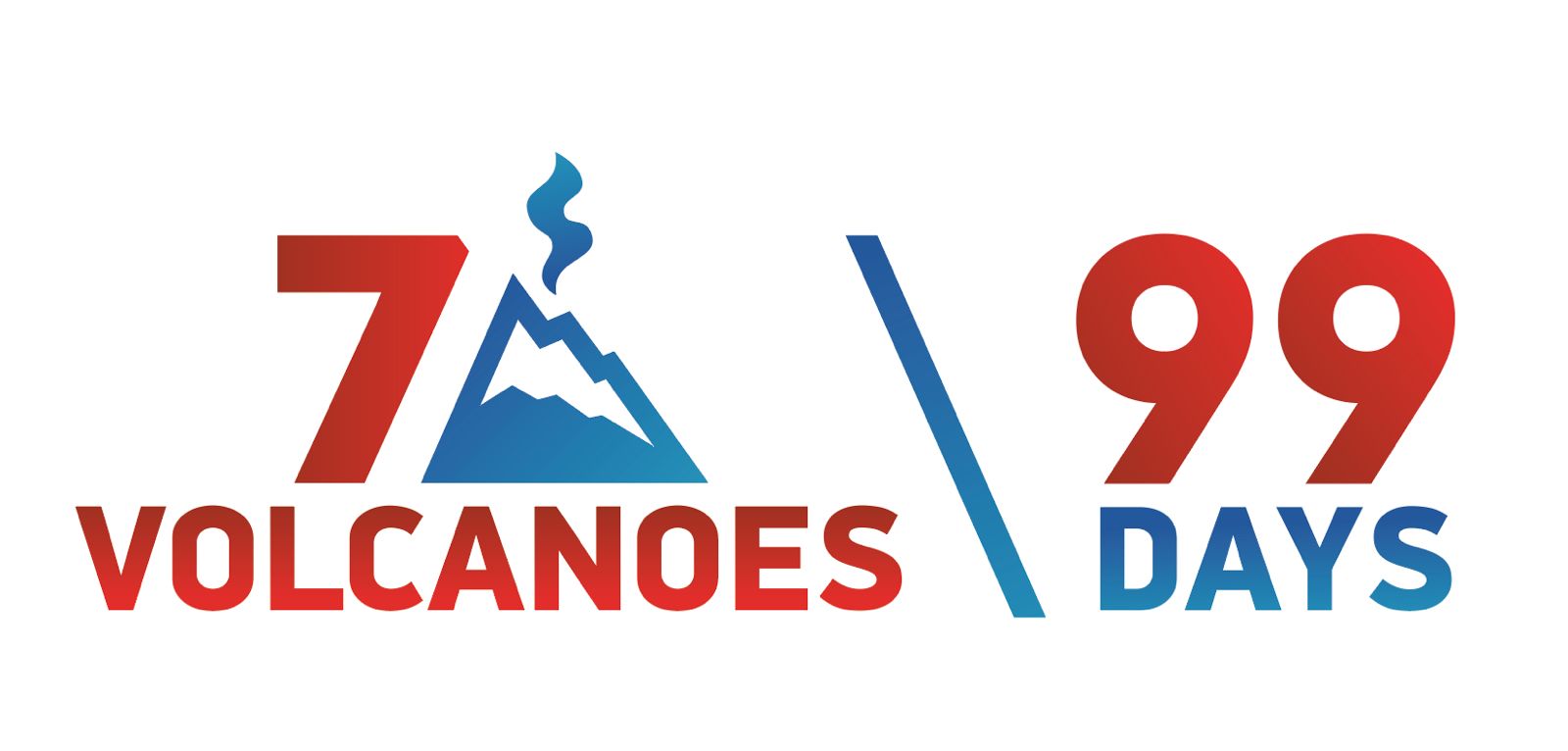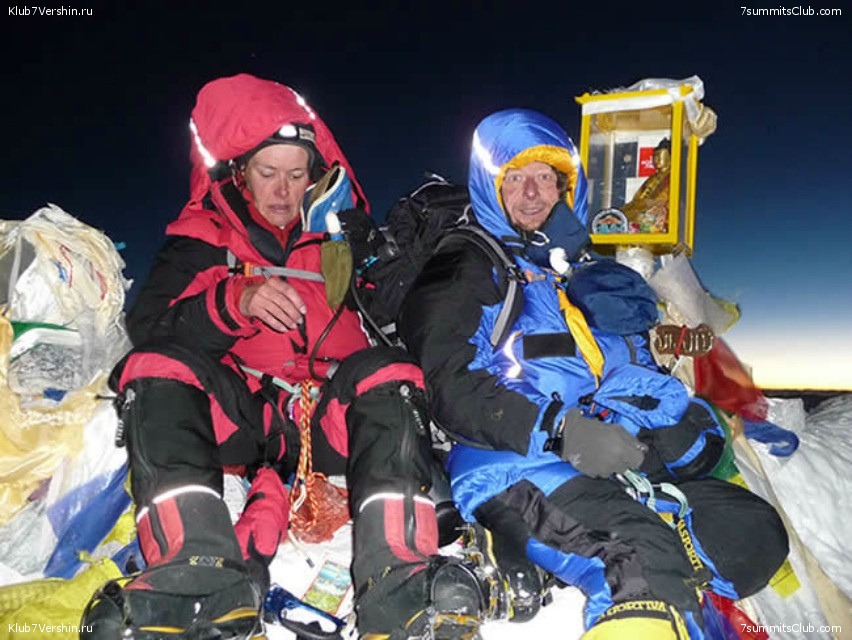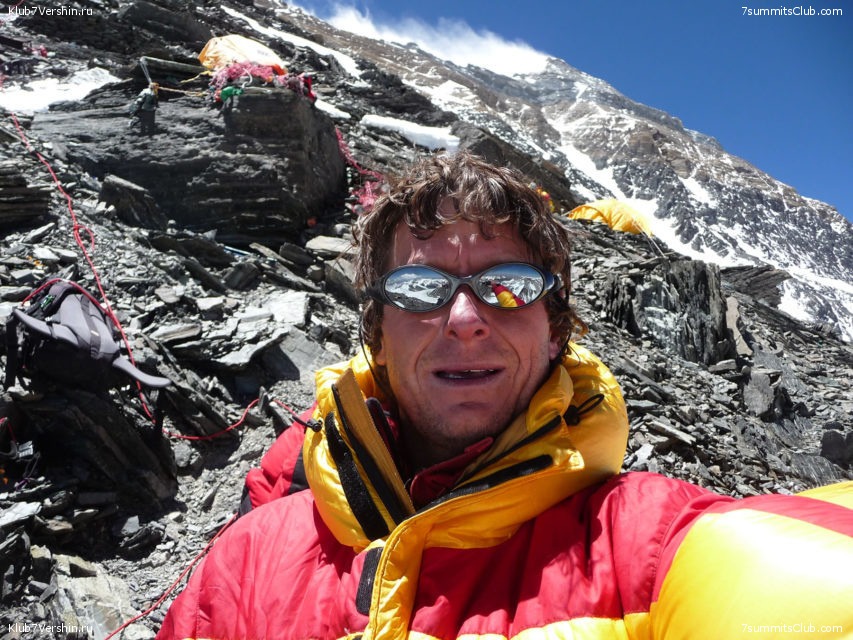How to climb Mount Everest (according to Noel Hanna, who’s climbed it eight times)
In 2006 Northern Irish adventurer Noel Hanna summited Everest for the first time in his life, one year after suffering retinal haemorrhaging on his first attempt.
Not content with climbing the world’s tallest mountain, after his descent Hanna then cycled down to sea level.
In the following year the adventurer would complete the same feat on six different peaks; Mt. Vinson, Cartensz Pyramid, Mt. Elbrus, Mt. Denali, Mt. Kilimanjaro and Aconcagua, each the tallest mountains on their respective continents.
Hanna is the first and so far only person to complete this astounding challenge.
“It was a good challenge so it was,” he chuckles, reflecting on the superhuman effort.
Ten years after his first successful Everest attempt, the Dromara-based climber has returned to conquer the mountain a further seven times – twice with his wife.
Hanna’s Everest pet-hate is poorly prepared climbers not respecting the mountain.
He wants to share his wisdom for those looking to take on the unforgiving mountain – less the mountain disrespects them back.
Training on the hills – then climbing another mountain Hanna’s background in running ultra-marathons meant that he was well prepared for taking on Everest. However, he suggests that we don’t all need to be at that fitness level.
“If you’re a person of regular fitness, running 10ks or half marathons and going to the gym two to three times a week, that’s the base and then it’s just about getting out to the hills and walking with a big rucksack.
“Walking at weekends, maybe a four hour-walk or a five-hour walk in the hills with a backpack on.
“It’s very beneficial if you go to a high mountain before you go to Everest. Somewhere like Aconcagua in South America.”
Noel Hanna and his wife Lynne at the top of Everest (Photo: noelhanna.com)
Training the mind
Hanna suggests that the fitter you are, the more confident you’re going to feel on the mountain.
“If you’re the weakest on a team, mentally that’s going to bring you down; if you’re one of the fittest on the team, mentally that’s keeping you strong.
“Go at your pace, don’t try and keep up with someone else just because they’re on your team, you have to go at your own body’s pace.”
Hanna’s kit list for Everest expeditions
Equipment for Base Camp and Advanced Base Camp: Duffle bag, sleeping bag, foam pad, gas lamp, gas stove, gas cylinders, personal items for washing, your favourite games, notebook
Technical equipment for ascent: Crampons (e.g. Grivel G12), rucksack 70-80 litres, rucksack 35-40 litres, harness, prussiks, karabiners with screwgate lockers – 3 items, jumar (ascender), telescope ski poles, thermos, rappel device, ice axe, head lamp, photo camera, video camera and assessors, accumulators, personal crockery for high camps
Equipment for body and feet: Trekking shoes, boots of “Everest” Millet type, down jacket + down trousers (or down overalls), Gore-tex jacket with wide hood, Gore-tex trousers (better semi-overalls), windblock jacket, windblock trousers, jacket “Polartec – 100”, warm underwear, personal underwear, Polartec gloves, Thinsulate gloves, Thinsulate mittens, warm woolen socks, balaclava, warm hat, windblock face mask, UV glasses, ski goggles (preferably), gaiters
Hone your ropework in the
Highlands Any technicals skills required to take on Everest can be perfected in the Scottish Highlands, or the Alps, according to Hanna.
“With Everest, there’s a technical side to it, but you don’t need to be super skilled on ropework for Everest.”
Hanna says it is essential to religiously work on your ropework, be confident in rapelling (abseiling) and jumarring (climbing up a rope).
Additionally, would-be Everest climbers need to be competent in clipping in and out of ropes, as well as passing anchors.
“All of that could be done in the Highlands of Scotland or even in a climbing gym, but obviously it’s more beneficial to get in the snow with your crampons on and doing the training that way, or going to the Alps and doing Mont Blanc.”
Don’t rely on the sherpa
All climbers must be capable of doing the climb by themselves and there can be no over-reliance on sherpas.
“A lot of people will think ‘Oh I’ve got a sherpa, if something happens to me he’s carrying me down’, but if the sherpa feels that his life is at risk he’s going to leave you.”
Tortellini and Coca-Cola
Hanna suggests that a drastic change in diet isn’t necessary for taking on the mountain.
“Some people take protein powders, but I don’t. I just eat normally, I don’t change my diet from home when I’m on the mountain because most good expeditions on the mountain, especially in the North side, get fresh stuff in all the way to base camp.
“We cook food all the way up to 7,000 metres and it’s really only on summit push at 7,700 and 8,300 that you use boil in the bag food, but normally we would have tins of tuna and foil packs of tuna.
“Ideally I like to put on maybe two or three pounds before I go to the mountain.
” Keeping yourself well fed even when your appetite fades is essential, says Hanna.
“A lot of people over 6 -7,000 metres lose their appetite. You need to force yourself to eat. It’s like a car if you don’t put petrol in it, it’s not going to go.”
The Northern Irishman’s unconventional eating and drinking habits suggests there is room for a few home comforts when tackling the fearsome summit.
“The first year I was climbing there with a good friend of mine from Italy and he had taken tortellini pasta up with us and I had packets of tuna and we just made a lovely meal before we went to summit.
“I’ve always taken a bottle of Coke with me and I remember three years ago going for the summit – I had a small bottle of Coke – stopping to take a drink of it and as soon as I opened the lid it just exploded and 90% of the liquid inside just flew out of it with the pressure.
“I was devastated.” Noel Hanna (Photo: noelhanna.com)
‘There is no wall’
Hanna recommends running your own race and ignoring mountain literature that tells you exactly where you will struggle. Undoubtedly having strong mental fortitude is crucial to a successful ascent.
“I went into climbing from endurance sports, like 100 mile runs. Somebody who has never done a marathon before, the first thing they will say to you is ‘when will I hit the wall?’ It’s a myth, it’s somebody else’s wall.
“If you’ve read a book that says you’re not meant to struggle till 7,000 metres and you’re struggling at 6,000 metres, mentally that’s going to affect you.
“I’ve seen people who struggle on their first acclimatization rotation, but once they get that sorted they’re the strongest on summit push. “I always said that 70% of it is in the head.”
Bring a lucky charm
Making physical, technical and mental preparations is empirical, but having a lucky charm is also of importance, says Hanna.
“My wife gave me a lucky black cat on a keyring and it’s gone to every mountain with me since 2004.
“I’m not superstitious or anything, but every single mountain that I go on, it’s attached on my rucksack.
“When I’m leaving on an expedition I need to make sure that cat’s with me.”
What does Everest mean to Hanna?
For most who complete the summit, Everest will hold a special place in their heart. For Hanna it was just another mountain – until his German Shepherd Babu passed away last year.
“Me and my wife have a German Shepherd pup who was ten and a half years old, he passed away 10 months ago. We said if anything ever happened to him we’d take his ashes to the summit of Everest.
“That’s what me and my wife did this year, we took his ashes with us and we sprinkled them a couple metres from the summit and had a wee tearful moment for him.
“When I think of Everest now, I think of my dog’s ashes. Everest is the most thoughtful mountain for me. We don’t have any children so he was the closest thing we had.”
Read more at: https://inews.co.uk/essentials/news/uk/girls-body-image-one-three-believe-not-pretty-enough/




